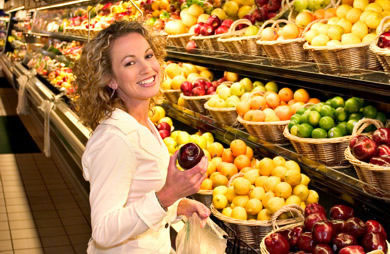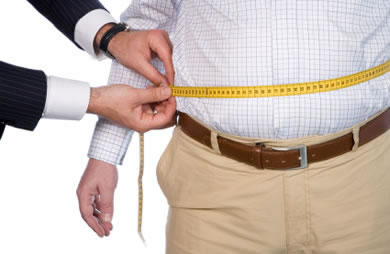|
Warning! Rant Ahead. Have you ever wondered why healthy foods like fruits and vegetables are more expensive than junk food? Or if there's anything you can do about it? Think about it for a minute. That bunch of carrots for sale in the grocery store is basically yanked out of the ground in some remote location, hosed off, thrown in a truck, and delivered to your grocery store. Sure, that costs money. The land, the seeds, the pesticides, the water, all the labor, the transportation, the grocery store itself—none of this comes cheap. It costs even more, apparently, if you want to leave the pesticides out and go organic. Now consider the humble Twinkie. As Michael Pollan puts it: “ Compared with a bunch of carrots, a package of Twinkies, to take one iconic processed foodlike substance as an example, is a highly complicated, high-tech piece of manufacture, involving no fewer than 39 ingredients, many themselves elaborately manufactured, as well as the packaging and a hefty marketing budget. So how can the supermarket possibly sell a pair of these synthetic cream-filled pseudocakes for less than a bunch of roots?” Good question. Especially these days, when a global economic meltdown is making the cost of healthy eating even more of an issue for many people. Just how does your supermarket sell Twinkies and other “junk” foods so cheaply? Well, there is a reason, and as you might expect, it’s got a lot more to do with special-interest politics than with the law of supply and demand, or any legitimate reason. In a nutshell, here’s the situation: the same government that hands out funds for research on the obesity epidemic and scrambles to find money to treat obesity-related diseases with one hand has been busy for years handing out money to subsidize the Twinkie, and most of the other junk food you’ll find on the shelves in your local supermarket, with its other hand. I don’t want to take up space in this blog on either a detailed explanation of this situation and how we got into it, or on a rant about the evils of corporate irresponsibility in the food industry and the complicity of government bureaucracies in helping to create our obesity-promoting food environment with ill-considered public policies. If you want to know the details of this strange case of how the government has been using one hand to thwart the other, Michael Pollan does a pretty good job of outlining the general picture in this article . And you can get a more detailed look at the history of this problem and all the other ways it has influenced our current situation in Food Politics, a very interesting book by Marion Nestle. I’d rather think about ways to correct this situation, so that healthy foods become more affordable and junk foods become the “luxury items” that most of us pass up. Honesty and Integrity in Food Pricing: A Modest Proposal Here’s an interesting idea that’s been circulating around lately in various groups concerned about both healthy eating and social responsibility. The idea is that we should put a few mathematicians and economists in a room and have them figure out what all the junk food produced with subsidized crops should really cost if there were no subsidies. Then we should make the retailers include this “real” price on their price tag, along with the actual selling price. At the same time, we could have the numbers people start figuring out what it really costs to produce, distribute, and consume all food products. Right now, many of those costs just aren’t taken into account at all. The prices we pay just don’t include things like the added health care costs likely to be associated with frequent use of certain products; the future costs of dealing with problems like soil erosion, pollution, or destruction of forests and other natural resources; or even what the items we buy would cost if they were produced under conditions that provided a true living wage for workers and fair compensation to communities where unfair trade practices have debilitated local economies. At some point, these actual costs really do have to be paid—either by future generations, or in present human suffering that could be avoided. So, it simply makes good moral and practical sense that we should start keeping track of these “real” costs, and making decisions that take them into account, both on the individual level, and on the social/governmental level. We may not be able to get “exact” numbers, but we can at least get a pretty good idea of which products generate the biggest difference between selling price and true social cost. It would probably take a while to see whether this information would actually change buying habits enough to force changes in either government policy or in the commercial food production and marketing industry. Personally, though, I think that one immediate benefit of implementing this kind of “truth in pricing” policy, even if we don’t actually change the prices that people actually pay at the grocery store right away, is that it would immediately become clear that the “worst offenders” are pretty much the same items that cause the biggest problems for people trying to lose weight and live a healthy lifestyle. If knowledge is power, this might be just the ticket we need to start generating some big changes, on lots of different levels. Maybe food producers wouldn't be so eager to jump on the junk food bandwagon if they thought their customers were aware of just what a bad deal it really is. And knowing the true cost of that “great deal” that gives you 2 sausage biscuits with eggs and cheese for $3 just might make it a little easier for us to say “No” to those 900 calories and 54 grams of fat, and yes to a nice homemade omelet with local eggs and fresh veggies. Some brave companies, like Original Beans are even taking this concept of truth in pricing seriously enough to actually change their prices. But it's not clear yet whether they'll be rewarded for this courageous step. That's up to us. OK, rant over. What do you think? Would knowing the “real cost” of the items in your grocery store make a difference to you in what you selected? Do you think food labels ought to include this kind of information? |
Popular Entries
More From SparkPeople
|




.png)









